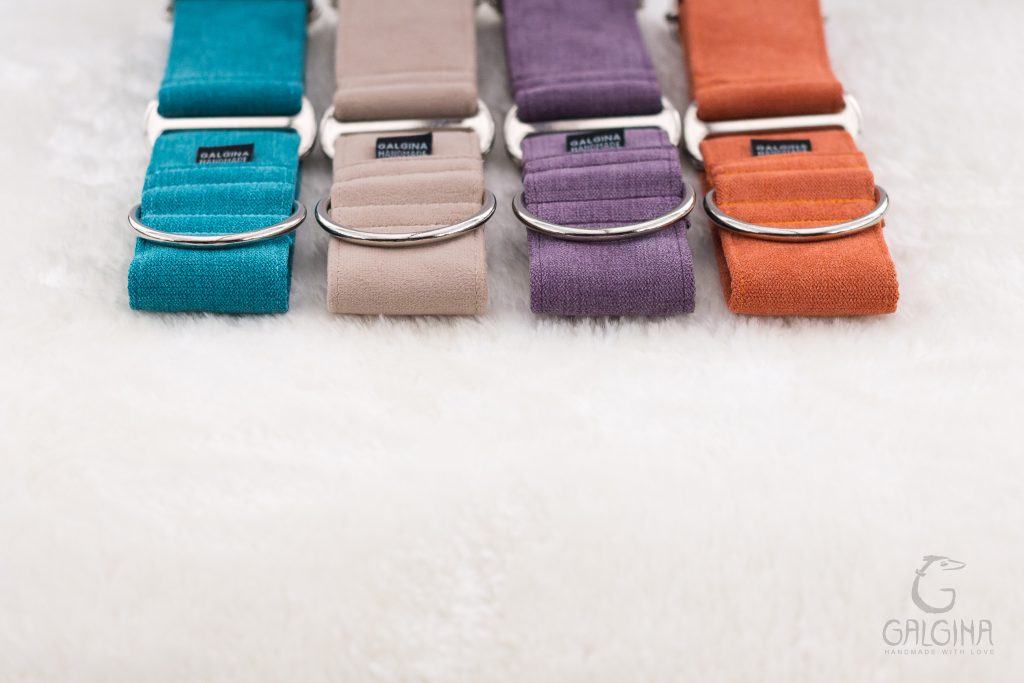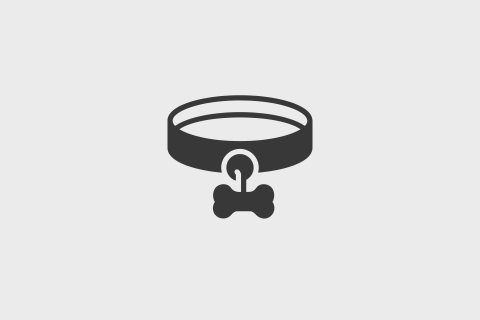A guide to textile dog gear
Dog gear made of fabric is something special, a wonderful adornment for our pets that often catches the eyes of passersby during walks. A diverse range of beautiful colors and patterns are very attractive but it is important to know that the properties of these products can differ from other widely used materials in the dog equipment industry.
What kind of dogs is the equipment intended for?
It is intended for dogs in the role of pets or companions to humans, who are regularly groomed, moderately active, and not exposed to extreme weather conditions or subjected to special loads (working dogs, hunters, pulling dogs, athletes). It is suitable for dogs that do not handle equipment roughly but it is not suitable for those allergic to metals (nickel).
What kind of people is textile dog gear intended for?
It is intended for those who appreciate the decorative value of equipment, who value the homey, pleasant, and comfortable feel of fabric, and those who avoid mass-produced, industrial-manufactured gear. It is also tailored to those who do not want to use animal-derived materials and PVC and appreciate handmade products. Our products are primarily intended for caring individuals who are concerned about how, where, and by whom accessories for their pets are made.
What is the use of textile dog gear?
Primarily, it is designed to provide physical safety and restrict movement during walks, as well as for light to moderate physical activities in urban and natural environments, and for carrying identification tags/GPS trackers. In addition to this, it also has a significant decorative role. It is by no means intended for correcting or punishing unwanted behavior (pulling on the leash) with dog-unfriendly training methods.
Does textile dog gear get dirty?
The answer is yes. Just like our clothes, shoes, upholstered furniture, and other textile home accessories, dog textile equipment can get dirty. How and how much it gets dirty varies from case to case, depending on how long and what factors it is exposed to. All Galgina brand products can be washed, but simply rinsing with water from a garden hose will not be enough for a nice appearance.
Wear and tear of textile products is normal
To some extent, wear can be anticipated, as it is dictated by the characteristics of the fabric. Some materials are more sensitive to UV rays and fade faster, others poorly tolerate friction, others are sensitive to snagging, fraying, and so on. The basic characteristics of each fabric, as described in the descriptions, should be understood as general guidelines and not rules, as the speed and degree of wear vary from case to case, mainly depending on how the products are used and maintained. By normal or moderate use of textile equipment, we mean use that is limited to a few hours a day with moderate physical activity in predominantly dry conditions.
Wear is also largely dependent on the dog’s behavior, as some dog behaviors negatively impact the equipment. These include, especially: rolling or frequently lying on rough or dirty surfaces, sniffing through forest undergrowth, thorny bushes, “wiping” against trees, facades, and similar rough materials, rough play with other dogs, intense explosiveness, and reactivity.
How to minimize textile dog gear wear as much as possible?
- Proper cleaning
Avoid rough cleaning and aggressive cleaning agents and follow maintenance instructions. Hand washing can help maintain the durability and color of the fabric. - Maintaining dryness
Make sure the equipment dries regularly, especially if it has been exposed to moisture. Wet equipment wears out faster, so thoroughly dry it after every rainy walk, contact with water, or washing. - Proper maintenance
Maintain the equipment according to recommendations. Regularly check for signs of wear and take immediate action to prevent further damage. Replace damaged equipment promptly with new ones. - Have a spare
It is advisable to have multiple pieces of equipment. This way, you can replace dirty, wet, or damaged equipment with clean and dry ones at any time, extending the life of each piece. - Method of attachment
Do not attach ID tags and other accessories to products with split key rings as they will scratch any metal hardware. Instead, use a thin lanyard, small snap hook, or bead chain. - Right choice
We advise using suitable equipment for each activity with your dog. Consider the characteristics of the fabric and use equipment intended for specific occasions accordingly.
The most common factors that accelerate the wear of textile dog equipment
- Dirt
Dirt (skin secretions, grass stains, mud, saliva, dust, sand, manure, etc.) can embed itself so strongly in the fabric that it becomes impossible to remove. In addition to greatly affecting the appearance of the equipment, dirt also damages the fabric, nylon core, and metal parts, and reduces their durability through friction. - Moisture, salt, and sun
Avoid exposing the equipment to seawater or freshwater as much as possible, as moisture and salt accelerate wear, cause unpleasant odors, and in the worst cases, even mold and rust. After any contact with water, the equipment must be properly dried (do not leave it on your dog). For swimming, choose materials suitable for the activity. Do not unnecessarily expose the equipment to UV rays, as they affect color fading, which is most noticeable in printed materials. - Pulling on the leash
Dogs that pull on leashes wear out equipment faster, especially martingale collars, which are exposed to constant friction against metal parts due to the tightening and loosening of the control loop. Proper use of the collar and walking on a loose leash can significantly reduce this type of wear. - Scratching and biting
Dogs that scratch heavily or chew on equipment can quickly wear out materials or even destroy them. Ensure that your dog does not have access to the equipment and store it in a safe place when not in use. - Constant wearing
Fabric collars are not the most suitable for constant wearing. If the dog constantly wears the same piece of equipment, it will wear out relatively quickly. The diverse use of equipment allows wear to be distributed among different pieces.
Are Galgina products tested?
No, our products are not officially tested. Despite our efforts, knowledge, and caution, handmade products cannot be equated with standardized devices in the industry that enable strictly controlled processes, ensure consistent conditions, and prevent possible deviations. We do not receive guarantees or specifications for any materials used from suppliers and manufacturers, so we cannot guarantee them for the final products. It is important to know that Galgina dog equipment is not intended for and suitable for safety restraint in a car or for use in other special circumstances where the use of A-tested equipment is appropriate. Use Galgina products solely at your own risk.
All components and materials are informally inspected and tested in a home environment. We check for visible flaws, test for rubbing, and washing, expose them to strong sunlight, and high temperatures, test their water permeability, check for color bleeding, and whether they wrinkle, etc.
Choice and advice
Customers with realistic expectations and knowledge of textile dog equipment are usually satisfied with our products and return with pleasure. We recommend thinking about which characteristics of the products (and to what extent) are important to you before purchasing. Consider your needs based on the type and intensity of activities with the dog, and whether you are willing to use the product correctly and maintain it appropriately. Nowadays, the market offers a wide range of dog equipment, so every caregiver can choose what will best suit them and their dog in all aspects. We are happy to advise anyone seeking guidance and strive to meet the expectations and needs of our customers.






